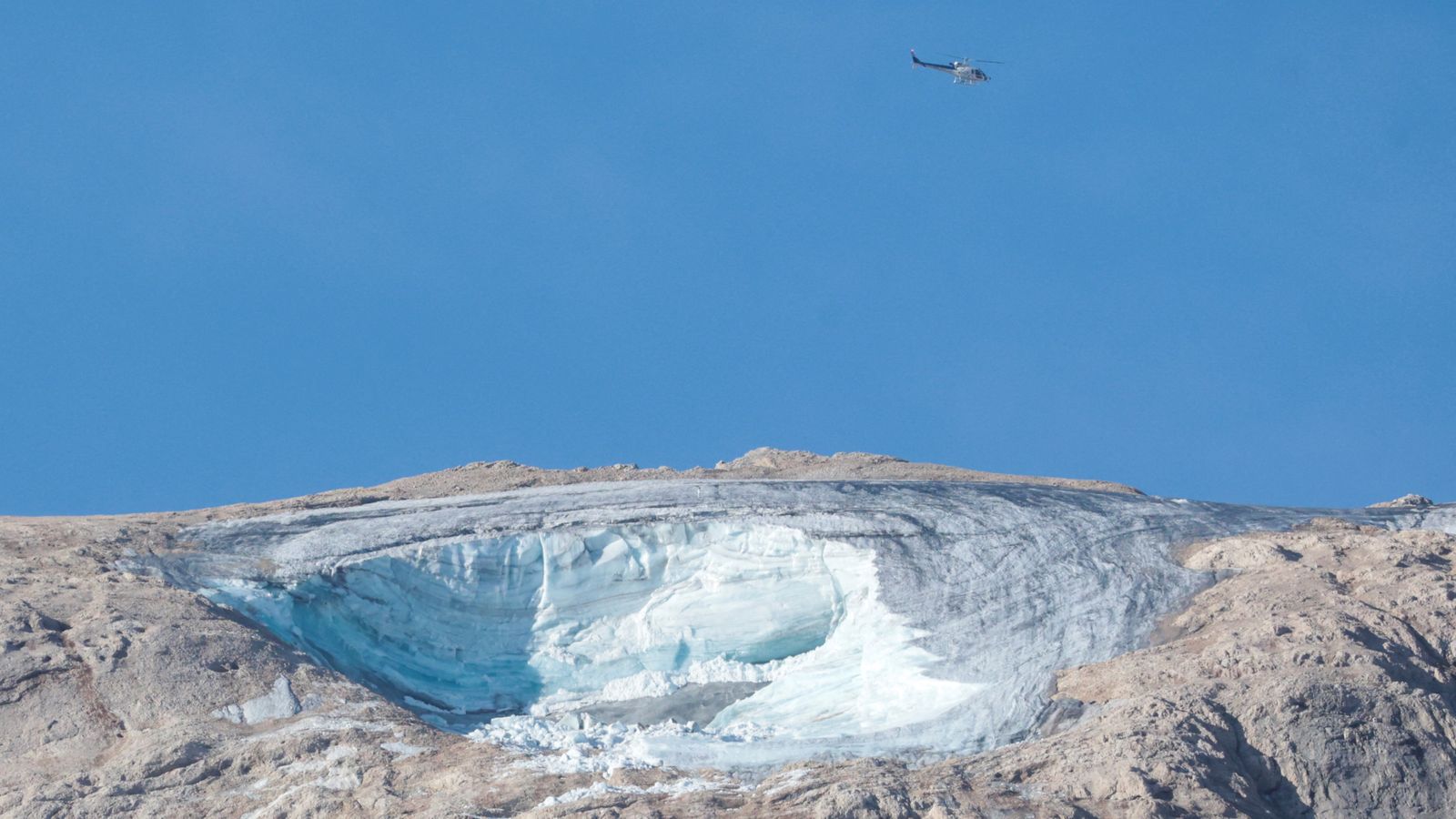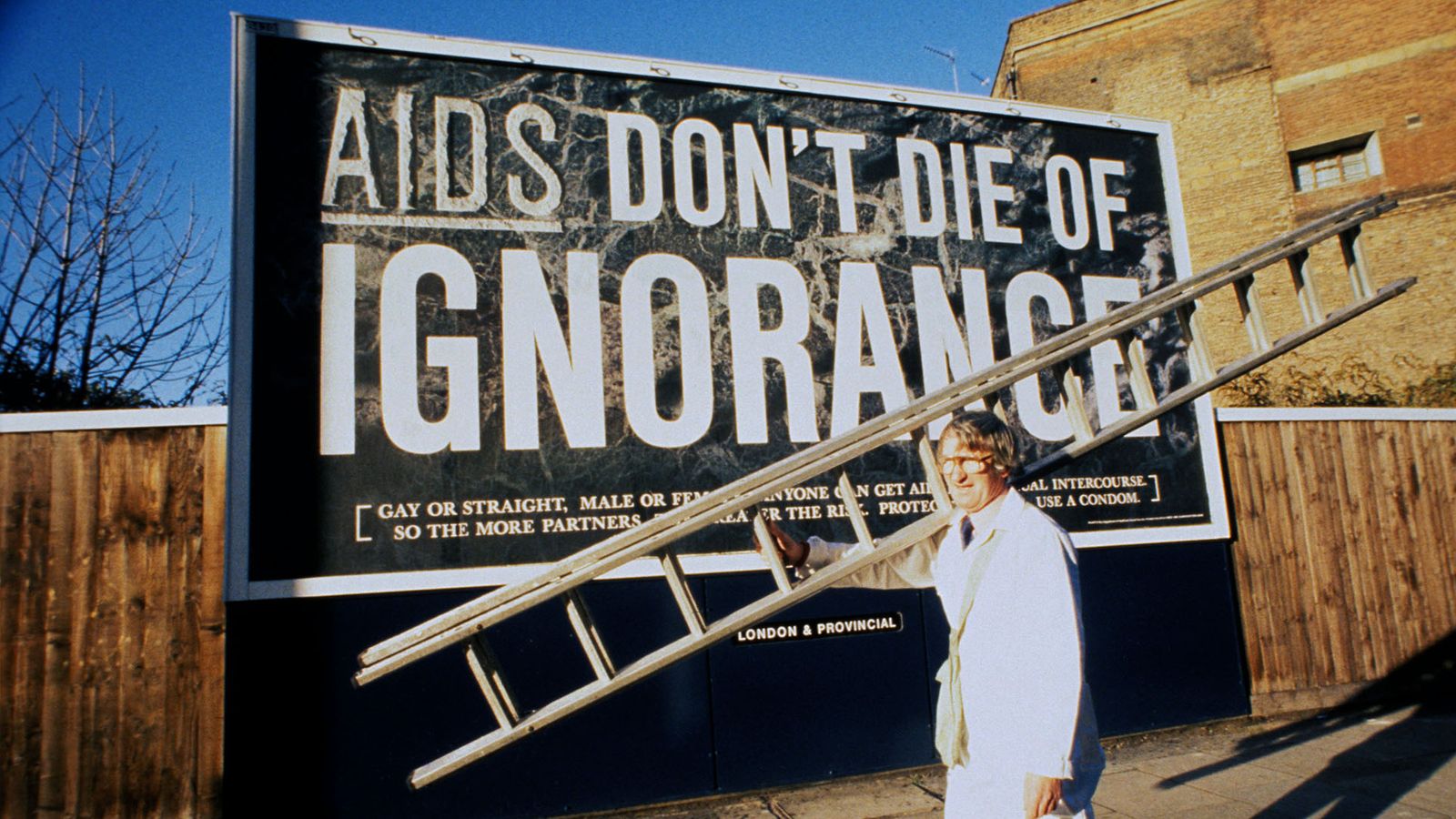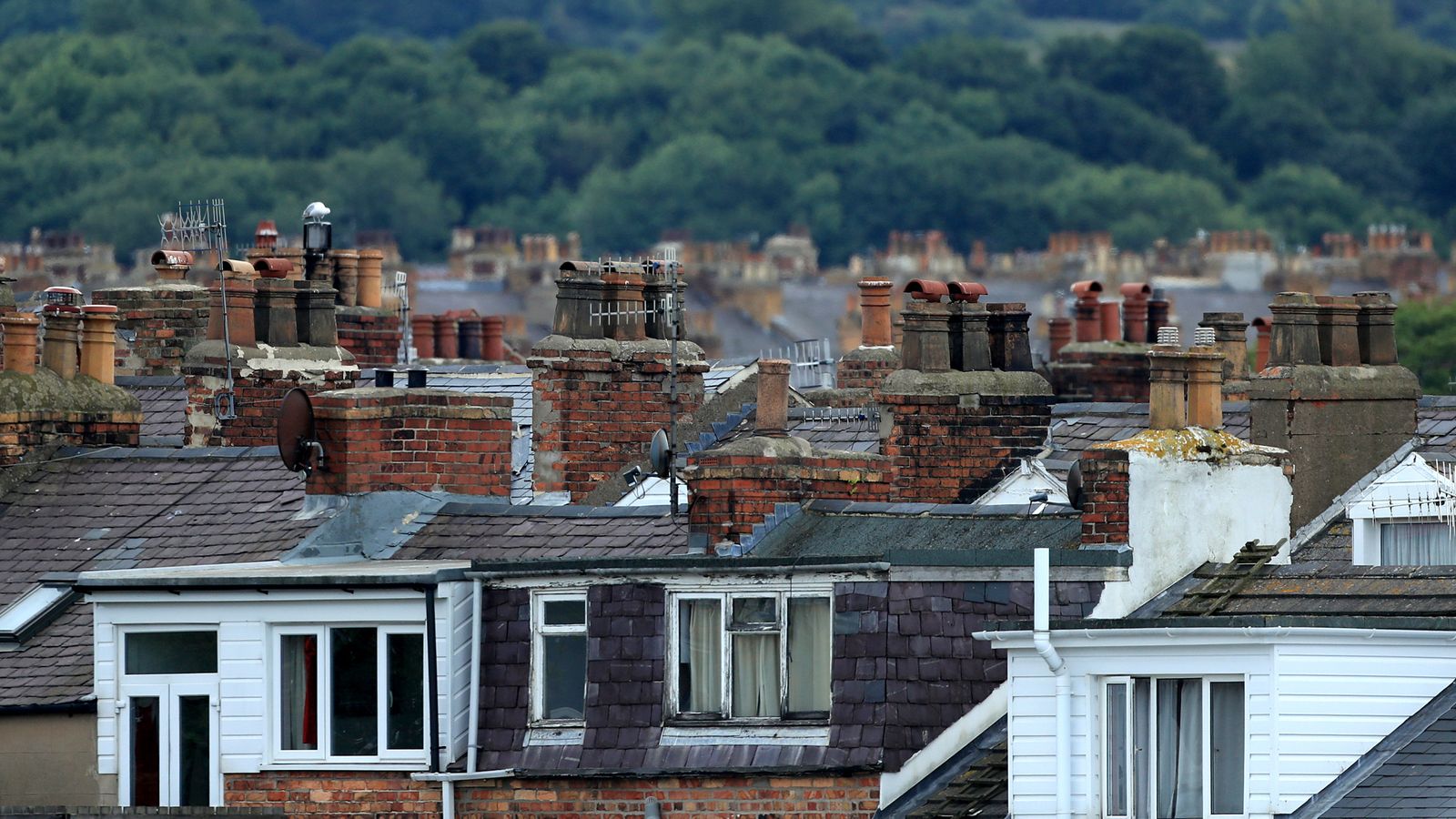The search for more than a dozen hikers who are still missing a day after a huge chunk of an Alpine glacier in Italy broke off is being hampered by thunderstorms.
Rescuers said conditions downslope from the Marmolada glacier were still too unstable to send back teams of people and dogs to dig into tonnes of debris.
And a thunderstorm forced the helicopter flying Prime Minister Mario Draghi to the stricken area to be diverted.
Seven people are now known to have died after the avalanche of ice, snow, and rocks on Sunday afternoon.
Nine others were injured, while drones have been deployed to search for those unaccounted for.
Trento prosecutor Sandro Raimondi said 17 hikers were initially believed to be missing.
But later, RAI state TV reported from the scene that the number unaccounted for had dropped to 15 after authorities were able to track down some of those feared missing.
Glacier chunk strikes hikers climbing in the Dolomites: At least six dead and 17 missing on Italian mountain
Italy: Seawater crashes through barriers and rushes up rivers as northern Italy faces worst drought in 70 years
Two US tourists fined and banned from Rome’s Spanish Steps after throwing scooter down monument
At least four bodies, brought to a makeshift morgue at an ice rink in Canazei in the Dolomites, have been identified.
RAI said three of those were Italians, including an experienced Alpine guide who was leading a group of hikers.
Another was a hiker whose relatives said had sent a selfie from the slope shortly before the avalanche.
One of the dead was from the Czech Republic, RAI said.
According to reports, those feared missing include some Italians, three Romanians, one with French nationality, another from Austria, and four from the Czech Republic.
Temperatures ‘absolutely an anomaly’
Veneto regional governor Luca Zaia said some of those hiking in the area on Sunday were roped together as they climbed.
What caused part of the glacier to break off and thunder down the slope at a speed estimated by experts at nearly 200mph is not immediately known.
But the heatwave gripping Italy since May, bringing temperatures unusually high for the start of summer even up in the normally cooler Alps, was being cited as a likely factor.
Upon arrival at an emergency rescue centre in Canazei, Mr Draghi said the collapse was “linked to” climate change.
Climate reporter
The Marmolada glacier collapse is a natural danger, in this case, directly linked to climate change – so say climate scientists.
How can they already be so sure?
The steep section of the Marmolada that gave way relies on sub-zero temperatures to keep it stable.
Hotter temperatures driven by human-induced climate change melt ice into water, triggering instability and collapses.
Glaciers around the world are now melting at unprecedented rates and are likely to continue shrinking well into the 22nd century.
Scorching heat has tormented northern Italy already this summer. Temperatures around the Marmolada recently reached a staggering 10C, and many other areas set June or all-time records for heat.
The Mediterranean country is also suffering one of its worst droughts in decades, triggering water rationing and sparking fears of an agricultural “catastrophe”.
It is a net exporter of food, and its northern mountains and lakes together attract visitors year-round.
The manifold impacts are a warning to anyone who thinks the impacts of climate change are distant in time or geography. They are here and now.
Jacopo Gabrieli, a polar sciences researcher at Italy’s state-run CNR research centre, said the temperatures were “absolutely an anomaly”.
Alpine rescuers on Sunday noted that late last week, the temperature on the 3,300-metre high peak had topped 10C (50F), far higher than usual.
The glacier, in the Marmolada range, is the largest in the Dolomite mountains in northeastern Italy. It is popular with skiers in the winter.
But it has been rapidly melting away over the past decades, with much of its volume gone.
Watch the Daily Climate Show at 3.30pm Monday to Friday, and The Climate Show with Tom Heap on Saturday and Sunday at 3.30pm and 7.30pm.
All on Sky News, on the Sky News website and app, on YouTube and Twitter.
The show investigates how global warming is changing our landscape and highlights solutions to the crisis.








